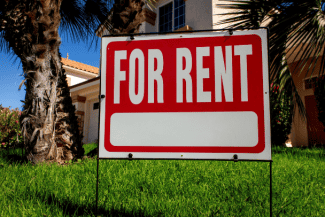The Silver Lining to Renter Delinquencies

While approximately 30 percent of renters have not made their payments on time so far this year, the overall collection rates throughout the pandemic have hovered around 93.5 percent, only 1.5 percent less than that of 2019, according to the National Multifamily Housing Council.
It is important to note, however, that this figure does not include those tenants paying an amount less than is indicated on their lease. In other words, if a tenant is only paying 50 percent of their rent, this is considered a “paying tenant” and is therefore not included in the non-delinquent stats.
There are currently 3.5 million renters that owe back rents, with an average delinquent amount of $5,600, according to the Urban Institute. While this amount may be a drop in the bucket for large operators, for smaller owners it could have a significant impact on the bottom line, especially for those that own apartment buildings in rent-controlled cities like Los Angeles and San Francisco.
Even at 93.5 percent collections, one or two delinquent tenants can have devastating consequences for owners of smaller buildings. With the Centers for Disease Control and Prevention-mandated eviction moratorium extended until June 30, this could spell trouble for those with high-leveraged debt or those looking to refinance.
THE UPSHOT FOR INVESTORS
But is there a silver lining to these rent delinquencies when it comes to investment opportunities?
Even though deal flow of investment sales was particularly hard hit in gateway cities last year, prices only dropped slightly, and cap rates, hovering around 4.5 percent, barely moved at all. This is because there has been billions of dollars of pent-up capital waiting on the sidelines for assets.
With a tight market, the competition for the few assets available has increased, creating an equilibrium for pricing and cap rates. For example, from an inventory standpoint, the Los Angeles market was down more than 60 percent year-over-year (approximately $1.5 billion in 2020 vs. $5 billion in 2019).
So, while back-pay rents may be a sunk cost for owners looking to sell, they do not appear to be affecting property values. This is often an unpleasant realization for investors looking to get a bargain on an apartment asset.
The upshot for buyers of properties with rental deficits is the leverage they may now have to encourage back-owing tenants to move out. The strategy of forgiving uncollected rents rather than paying hefty relocation fees is a much more cost-effective approach to vacating units, especially for tenants living in rent-controlled buildings. Some buyers are now specifically targeting buildings with below-market tenants that are also delinquent, for this reason.
Given the choice, many tenants would prefer to walk away amiably without owing thousands of dollars, find another place to live, and avoid an eviction that could severely damage their credit score.
For an industry just beginning to get back to normalcy, some sellers, buyers and renters may be able to experience a silver lining coming out of this horrific pandemic.
Source: multihousingnews.com















 Accessibility
Accessibility